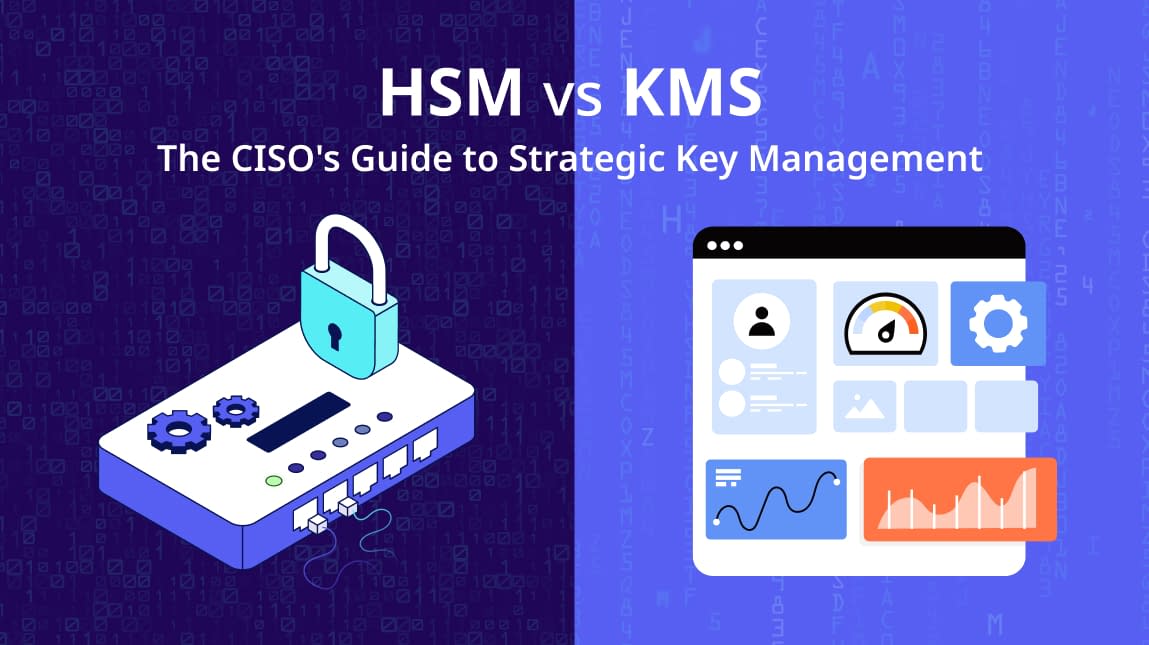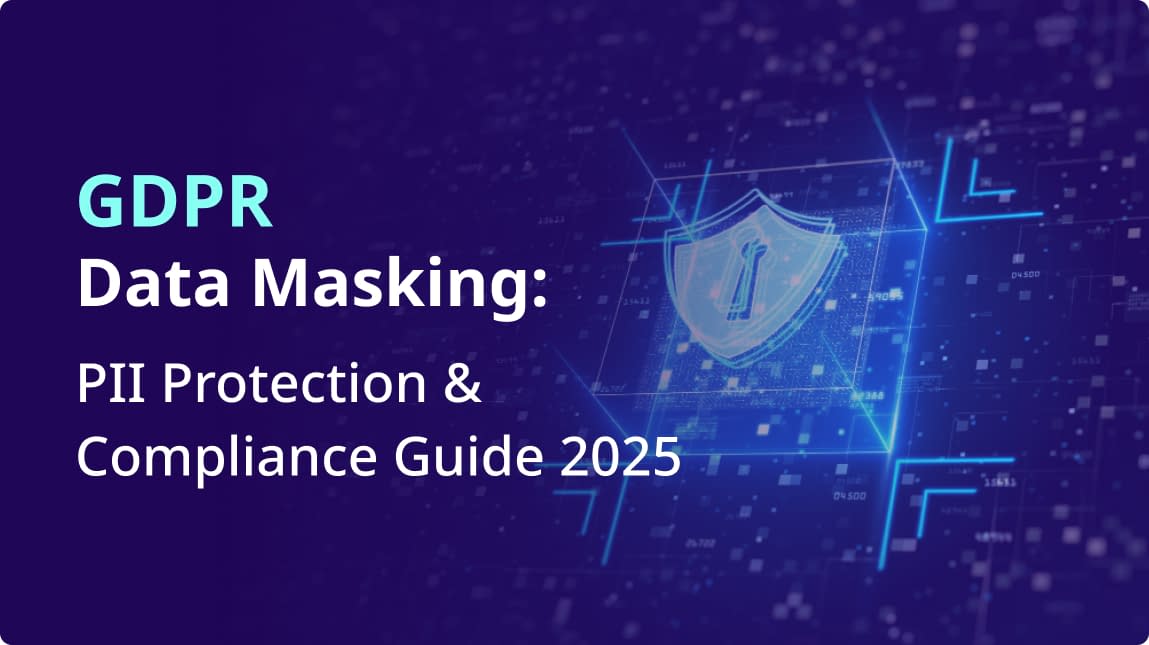As data becomes increasingly important for organizations, the balance between usability and . However, with the growing concerns around data privacy and security, it has become critical for businesses to safeguard their data from unauthorized access and misuse. In recent years, data masking has gained immense popularity as a powerful solution that protects sensitive data. In this blog, we will explore what data masking is, how it works, its importance, regulations that require data masking, data masking techniques and approaches, types of data masking, challenges of data masking, data masking best practices, and data masking use cases.
What is Data Masking?
Data masking, also known as data obfuscation, is the process of creating a structurally similar but inauthentic version of an organization’s data. The goal is to hide original sensitive information by replacing it with realistic, fictional data. For example, real customer names might be replaced with generated names, and Social Security Numbers could be swapped with random numbers that still follow the correct format (XXX-XX-XXXX).
Unlike encryption, which makes data unreadable without a key and is intended to be reversed, data masking is typically a one-way process. The resulting data set remains usable and retains its referential integrity, meaning the relationships between tables are maintained, so that applications can be tested and developed without exposing real, sensitive Personally Identifiable Information (PII), Protected Health Information (PHI), or payment card data.
Why Data Masking is Important
Data masking is vital for two primary reasons: protecting data from internal and external threats, and complying with data protection regulations. Exposing sensitive data, even in non-production environments like testing or QA, creates significant security vulnerabilities. Data masking enables important DevOps processes by supplying secure, usable data.
Furthermore, numerous major data privacy regulations mandate the protection of sensitive data, making data masking a key compliance tool. Examples include:
- General Data Protection Regulation (GDPR): This EU regulation requires organizations to implement technical and organizational measures, such as pseudonymization (a form of masking), to protect the personal data of EU citizens.
- Health Insurance Portability and Accountability Act (HIPAA): A U.S. law requiring healthcare organizations to protect sensitive patient health information from unauthorized disclosure.
- Payment Card Industry Data Security Standard (PCI DSS): A global security standard requiring organizations that handle credit card transactions to protect cardholder data. Masking primary account numbers (PANs) is a specific requirement.
Failure to comply with these regulations can lead to severe fines, legal action, and significant reputational damage.
Common Data Sources for Data Masking
Data masking is not limited to a single type of system; sensitive data can reside in numerous places across an organization’s ecosystem. Understanding these sources is a key initial step in creating a comprehensive data masking strategy.
Masking for Relational Databases
Relational databases are the most common source of sensitive data and the primary target for data masking. They are used to store structured data and are central to many business operations. Examples include:
- SQL Server, Oracle, MySQL, and PostgreSQL: These databases contain customer information, financial records, employee data, and other critical business data. Masking is often applied to specific columns containing PII, such as names, addresses, Social Security numbers, and credit card details.
Non-Relational (NoSQL) Databases
As organizations adopt more flexible data architectures, sensitive data is increasingly stored in NoSQL databases. Masking these sources requires a different approach than traditional relational databases.
- MongoDB, Cassandra, and Couchbase: These databases, which store data in flexible formats like JSON documents, often contain user profiles, session data, and other sensitive information. Masking techniques must be adapted to handle the semi-structured nature of this data.
Flat Files and Spreadsheets
Sensitive data is frequently stored in unstructured or semi-structured files, which can be easily overlooked in a data masking strategy.
- CSV, TXT, and Excel files: These files are commonly used for data exports, reports, and ad-hoc analysis. They can contain anything from customer lists to financial reports. Masking tools can be used to scan and sanitize these files before they are shared or used in non-production environments.
Although many data masking platforms lack the ability to discover and mask flat files and Excel documents, ADM can seamlessly discover and mask data within flat files, spreadsheets and even complex data formats like embedded XML.
Data Masking Techniques
When many people think of data masking, they think of data redaction or character masking. Although this is still technique is still deployed for some use cases, it is not suitable for test data management. Today, most organizations use a combination of data substitution with deterministic rules, with tokenization.
- Shuffling: Shuffling randomizes the order of entries within a data column. For instance, a column of email addresses could be shuffled so that the addresses are no longer associated with the correct customer records in the same row. While simple, it must be used carefully, as it may be possible to re-identify individuals if other data points are not also masked.
- Redaction / Character Masking: This involves replacing characters in a data field with a fixed character, such as an ‘X’ or an asterisk ‘*’. It is often used for partial masking, where only a portion of the data is hidden.
- Example: A Social Security Number
***-**-1234or a credit card**** **** **** 5678.
- Example: A Social Security Number
- Averaging: For numerical or date fields, specific values can be replaced with an average for a given group. For example, instead of showing individual employee salaries, a field could be populated with the average salary for that employee’s department.
- Tokenization: Replaces sensitive data with unique tokens, which are then stored separately. The original data can be accessed via a secure lookup table.
- Substitution: This technique involves replacing sensitive data with look-alike data from a predefined lookup table. For example, a column of real names can be replaced with names from a list of fictional names, preserving a realistic appearance.
Data Substitution: Critical for Realistic Data
Data substitution is a technique for masking sensitive information by replacing it with fictional yet plausible alternatives. This method is critical for creating realistic test data because it preserves the original data format, preventing application errors during testing.
For example, a list of real customer names, like “John Smith” and “Priya Patel,” can be replaced with fictional names such as “David Jones” and “Olivia Chen.” Since the data remains contextually realistic (a first and last name), the application being tested will still receive the expected input, ensuring that user interface fields and reports function correctly.
Data Substitution Algorithms
Substitution is one of the most common masking methods. It works by swapping sensitive values with other, non-sensitive ones. There are two primary algorithms that are utilized;
-
- Random Substitution: This method replaces an original value with a random one from a pre-defined list. For example, the name “Sarah Chen” might be replaced with “Emily Davis.” While simple, this approach doesn’t guarantee that the same value will be masked consistently across different databases.
- Deterministic Substitution: This is a cornerstone of effective test data management. It ensures that a specific input value always produces the same masked output, regardless of where it appears. For instance, “Sarah Chen” will consistently become “Emily Davis” in every table and database. This approach is essential for maintaining referential integrity, which means that the relationships between tables are preserved.
Deterministic Data Masking: Ensuring Consistency
Deterministic masking is vital for maintaining the integrity of your test environment. Without it, the relationships between different data points can be broken.
Consider a customer’s name that appears in multiple tables, such as Customers, Orders, and Shipping. If “John Smith” is randomly masked to “David Jones” in the Customers table but to “Marko Petrovic” in the Orders table, the link between the customer’s records is broken. Any tests that rely on these relationships will fail.
By using deterministic substitution, you guarantee that “John Smith” will always be replaced by “David Jones” across all tables. This consistency ensures that the relationships within the entire database ecosystem remain intact, creating a reliable and consistent test environment.
Types of Data Masking
There are two primary types of data masking that are used to apply these data masking techniques. The first type of data masking is static data masking, which applies irreversible and untraceable anonymization to produce a masked copy of the sensitive data. The second type is dynamic data masking, which applies real-time masking of sensitive data, often based on user access and permissions.
Static Data Masking (SDM)
Static Data Masking involves creating a separate, fully masked copy of a database. This masked copy is then used for development, testing, or training purposes. The process typically involves taking a backup of the production database, loading it into a staging environment, applying the masking rules to overwrite all sensitive data, and then making this sanitized copy available to developers and testers.
- Best For: Creating secure and permanent development/QA environments where the data does not need to be updated in real-time.
Dynamic Data Masking (DDM)
Dynamic Data Masking applies masking rules on-the-fly, as data is requested from the database. The original production data remains unchanged. DDM is often implemented as a proxy layer that intercepts queries to the database and masks the data in the query result before sending it to the user. Access can be role-based, meaning a call center agent might see a partially masked credit card number, while a database administrator sees the full number.
- Best For: Role-based security in production environments and applications where creating a separate masked database is not feasible.
Data Masking Best Practices
Implementing a data masking solution requires careful planning. Adhering to best practices can help organizations avoid common pitfalls like data integrity issues or poor performance.
- Discover and Classify All Sensitive Data: The first step is always to identify what data is sensitive and where it resides. You cannot protect what you don’t know you have. Use data discovery tools to locate all instances of PII, PHI, and financial data across your databases.
- Maintain Referential Integrity: Masked data must remain usable. This means preserving the relationships between tables (e.g., primary and foreign keys). If a
CustomerIDin theCustomerstable is masked, all correspondingCustomerIDentries in theOrderstable must be masked to the exact same value to avoid breaking the application. - Use Realistic, Contextually Appropriate Data: The masked data should follow the original data’s format and business rules. An email address should still look like an email address. A postal code should be valid for the associated city. This ensures that testing remains effective.
- Choose the Right Technique for the Job: Do not rely on a single masking technique. Use a combination tailored to the data type. Use substitution for names, redaction for credit card numbers, and shuffling for less critical categorical data.
- Ensure the Masking Process is Irreversible: The primary goal is to prevent the re-identification of original data from the masked version. Your chosen techniques should be secure enough that they cannot be easily reverse-engineered.
- Automate and Integrate: Integrate data masking into your data management workflows and CI/CD pipelines. Automating the process of creating masked environments reduces manual effort, minimizes the risk of human error, and ensures that development teams always have access to safe, up-to-date data.
- Test and Validate: Thoroughly test both the masked data set and the masking process itself. Validate that the application functions correctly with the masked data and perform security testing to ensure the masking is robust.
By thoughtfully implementing these techniques and best practices, organizations can effectively leverage their data for innovation and growth while upholding their commitment to data privacy and security.
Finding the Right Masking Solution for You
Selecting the ideal data masking solution isn’t a one-size-fits-all process; it depends entirely on your organization’s specific needs and use cases. In many cases, a comprehensive strategy involves using a combination of techniques across various databases to achieve both robust data protection and high data utility.
When you’re dealing with test data management, static data masking combined with deterministic substitution is often the gold standard. This approach creates a consistent, high-quality masked dataset that preserves relationships across tables, ensuring your testing environments are reliable and accurate. Leading static data masking platforms, such as ADM, provide the ability to program custom masking runs that meet your exact specifications and mask consistently across all data sources (enterprise-wide referential integrity).
On the other hand, dynamic data masking is perfect for operational environments. This technique masks data in real time based on user roles or access controls. For example, a customer service representative might only see the last four digits of a credit card number, while a manager can view the full number. This ensures sensitive data is protected without creating separate masked datasets.
While not as common today, older methods like redaction (replacing data with a placeholder like ‘X’) and shuffling(randomly mixing values within a column) still have their place for specific, niche use cases where maintaining data format or relationships isn’t a priority.
Ultimately, finding the perfect solution starts with a thorough understanding of your data landscape and security requirements. We recommend consulting with a data management expert who can analyze your needs, assess your current systems, and recommend the ideal combination of masking techniques to protect your sensitive data while supporting your business goals.











Comment